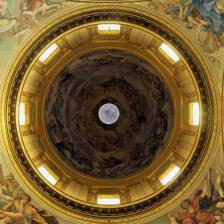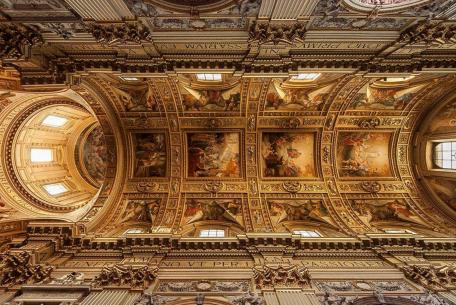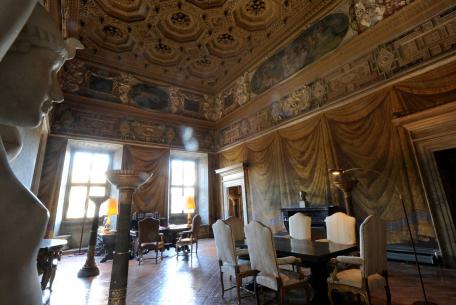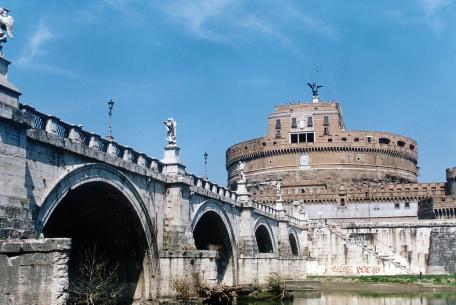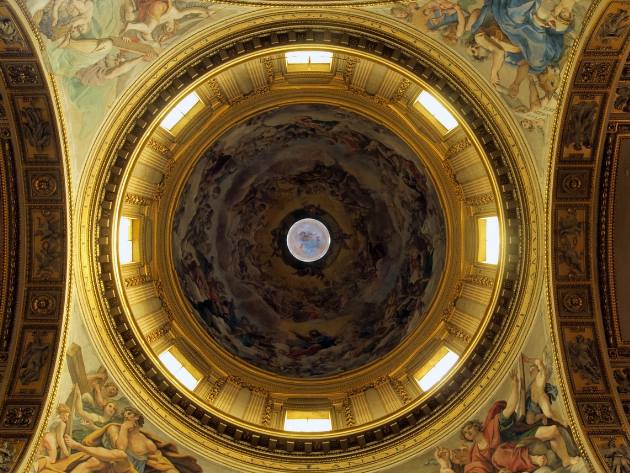
"There would be a drama that, if I were still in my career, I would music with all my soul, and it's Tosca."
(Giuseppe Verdi)
Rome is synonymous with art, culture and beauty, represented in the works of the greatest artists, musicians and poets. Keeper for centuries of precious artistic gems, it has always been the real and imaginary setting of cinema masterpieces and great melodies. Among these, an important role belongs to Tosca, an 1889 work by Giacomo Puccini, with a libretto by Giuseppe Giacosa and Luigi Illica, inspired by the homonymous play by Victorien Sardou.
Tosca and Rome, an indissoluble bond: the name of one immediately evokes the memory of the other. The story of love, jealousy, power and death takes place in the Eternal City in just one day, on 14 June 1800. It is the time of the fall of the Roman Republic, the Restoration of the Papal States and the revolutionary echoes from France. In Rome, at the Teatro Costanzi, the melodrama premiered on 14 January 1900 in the presence of the author.
With a pleasant stroll through the historic centre, you can discover the places of the Tuscan composer's most beloved work, to experience its evocative atmosphere and feel at the centre of its original "stages": three splendid locations for as many moving acts, which revolve around the three main characters - the singer Floria Tosca, the painter Mario Cavaradossi and the police chief Scarpia.
Basilica of Sant’Andrea della Valle - Act I
L'arte nel suo mistero,
le diverse bellezze insiem confonde...
Ma nel ritrar costei,
Il mio solo pensiero,
Il mio sol pensier sei tu,
Tosca, sei tu!
(Recondita armonia, Cavaradossi, Act I, Scene III)
Nearby Corso Vittorio Emanuele and Corso Rinascimento, in Piazza Vidoni, stands the Basilica of Sant’Andrea della Valle, the magnificent backdrop of the famous duet between Tosca and Cavaradossi and the Te Deum.
The construction began in 1591 and was completed only in the second half of the following century with the intervention of architects such as Francesco Grimaldi, Giacomo Della Porta, Carlo Maderno and Carlo Rainaldi. Rainaldi's elegant travertine façade is a prelude to a vast Latin cross nave, dominated by the beautiful dome by Maderno with the frescos "the Glory of Paradise" - a baroque masterpiece of illusionism by Giovanni Lanfranco - and embellished with pendentives by Domenichino. Not to be missed the apse, with gold and frescoes by Mattia Preti, and the Barberini Chapel, the probable inspiration for Puccini's Attavanti Chapel in the scenic fiction.
Here, Cavaradossi is painting a picture of the Magdalene with the features of the Marchesa Attavanti, and starts singing the splendid aria "Recondita armonia". Then, he meets the Bonapartist Cesare Angelotti, escaped from Castel Sant'Angelo, and help him to run away. Shortly after, the singer and painter's lover Floria Tosca arrives, and by misunderstanding, is overwhelmed by an attack of jealousy. The two lovers make peace on the notes of a passionate duet. Among the baroque splendours of the Basilica, the Baron Scarpia enters the scene: in search of the fugitive Angelotti and infatuated with Tosca, he thinks about his evil plans during the celebration of the Te Deum and again feeds the woman's suspicions.
Palazzo Farnese - Act II
Vissi d'arte, vissi d'amore,
non feci mai male ad anima viva!...
Con man furtiva quante miserie conobbi, aiutai…
(Vissi d’arte, Tosca, Act II, Scene V)
From Sant’Andrea della Valle, walking towards the lively Campo de' Fiori, you reach Piazza Farnese, the square dominated by the 16th-century Palace of the same name, the second act setting. Commissioned by Alessandro Farnese (later Pope Paul III), its construction began in 1517 by Antonio Sangallo il Giovane, then followed by Michelangelo and Vignola, and was finally completed by Giacomo Della Porta in 1589.
Today the seat of the French Embassy, in the past, Palazzo Farnese was called "the dice of the Farneses'" due to its shape, and was considered one of the four wonders of Rome: the elegant vestibule, the refined courtyard, the beautiful garden, the galleries and the sumptuous halls richly decorated. Among these, the famous Gallery on the noble floor, frescoed by Annibale Carracci between 1597 and 1608, with the collaboration of his brother Agostino, Lanfranco and Domenichino, and the Sala dei Fasti Farnesiani, the artwork by Francesco Salviati and the Zuccari brothers.
The Palace is the residence of the Baron Scarpia, where, in addition to the central part of the opera, a scene of great pathos takes place. Mario Cavaradossi is here, after being arrested and tortured for helping the escapee Angelotti. To help her lover, Tosca reveals to Scarpia the hiding place of the fugitive. However, the news of the Austrian defeat in Marengo provokes the exultation of Cavaradossi who is definitively sentenced to death. The woman, willing to do anything to save him, sings the touching "Vissi d’arte" and agrees to give herself to Scarpia in exchange for the pardon and a safe-conduct. When the man gets close to her, Tosca stabs him to death. Regretful, she blows out the candlestick on the table, takes two candles and places them on the sides of the Baron's head, religiously putting a crucifix on his chest.
Castel Sant’Angelo - Act III
Svanì per sempre il sogno mio d'amore...
L'ora è fuggita... E muoio disperato!
E non ho amato mai tanto la vita!
(E lucevan le stelle, Cavaradossi, Act III, Scene II)
Behind Palazzo Farnese, you reach the romantic Lungotevere, from which, walking to the right, you arrive at Sant’Angelo Bridge, suggestive access to the imposing Castel Sant’Angelo, on the other side of the Tiber. Built around 123 AD as a sepulchre for the emperor Hadrian and his family, the Castle has been the protagonist for about two thousand years in the history of Rome: mausoleum, court, fortress and papal residence, Risorgimento prison and execution place and, since 1925, a National Museum which houses paintings, sculptures, weapons and artefacts from various ages.
Going up the different levels built over time, and walking through the mighty walls, courtyards, loggias, Renaissance rooms and dungeons - in which Cagliostro and Benvenuto Cellini were also imprisoned - you reach the Terrace with the imposing bronze statue of the angel, the location as spectacular as fundamental in the dramatic ending of Puccini's masterpiece.
In one of the most emblematic monuments of Rome, the third and final act is staged. It's dawn: Mario Cavaradossi is waiting to be executed and sings the melancholy notes of "E lucevan le stelle", one of the most moving arias in the whole opera and the history of Bel Canto. The painter recalls the moments he lived with his beloved Tosca. The woman suddenly arrives and tells her beloved that they are finally safe: she shows him the safe-conduct, informing him of the false shooting agreed with Scarpia. However, when Tosca understands that Cavaradossi has really been shooted, and sees the guards chasing her for Scarpia's murder, desperate, she commits suicide by throwing herself from the terrace of the Castle, while shouting "O Scarpia, avanti a Dio".
 Condividi
Condividi












































